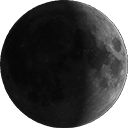
Despite Winter Storm Uri, Resilient Texas Dove Populations Point to Favorable Hunting Season
AUSTIN — September marks the start of dove season for almost 300,000 Texas hunters per year. After Winter Storm Uri hit the state in February, many hunters are wondering how the snowfall and below-freezing temperatures may have affected dove populations. Texas Parks and Wildlife Department (TPWD) biologists report that hunters can expect a good dove season, especially in the South Zone.
“Our spring dove surveys suggest that there may have been some impacts from the winter storm, particularly in the northern half of the state, but it’s difficult to know the extent since dove populations naturally fluctuate from year to year,” said Owen Fitzsimmons, TPWD Dove Program Leader. “The most evident impact seems to be in the North Zone, where white-wing estimates are below average overall. I don’t anticipate any long-term impacts. The good rainfall this spring and summer has resulted in good production, which will help offset any losses and allow a quick recovery.”
Fitzsimmons says that statewide breeding populations are about average this year with 25 million mourning doves and 12 million white-winged doves.
“Overall, breeding population estimates range from average to below-average in the North and Central Zones, but they are still well within normal, and even a little up from 2019, when we last did surveys,” Fitzsimmons added. “In the areas with good hatch-year production, we are expecting an average to good season. Our estimates for the South Zone are above average so we anticipate another excellent season there.”
One effect of the winter storm that hunters in every Dove Zone may notice this fall is frostbite damage on doves they harvest. The frostbite damage, however, doesn’t appear to be impacting the overall health of the birds. Fitzsimmons says that it’s not unusual to find doves that migrate in from the northern states with missing toes or even the tips of their bills. Fitzsimmons notes that Winter Storm Uri did take a toll on Texas birds though, especially white-winged doves.
“They are a sub-tropical species and not very cold-hardy, but they are pretty resilient,” Fitzsimmons said. “Despite their injuries, most of the ones we’ve encountered are otherwise healthy and in good condition.”
Habitat conditions have been favorable throughout the state this year thanks to abundant rainfall, which could make for good hunting conditions all season long. Fitzsimmons encourages hunters to be ready for action-packed days in the field throughout October and even into the second half of the season.
Hunters may notice there are six Special White-winged Dove Days instead of the usual four this year. This is the only regulatory change for the 2021-22 season.
“Since federal regulations restrict the South Zone Regular Season from opening prior to September 14, the Special White-winged Days provide some early September hunting opportunity, and they continue to grow in popularity every year,” Fitzsimmons said. “We worked with the U.S. Fish & Wildlife Service this year to bump up from four days to six, which will provide three-day weekend opportunities for our hunters.”
Dove hunters should purchase their new 2021-22 Texas hunting license prior to hitting the field this fall. Along with their hunting license, those hunting dove must have the migratory game bird endorsement and be HIP-certified. Hunters must accurately answer the HIP questions when getting certified, and, if a vendor does not ask questions about hunting activity last season, hunters are encouraged to ask that they do so. It’s also required by law that hunters have proof of their completion of a hunter education course.
Dove season dates for the North, Central and South Zones, along with regulations, bag limits and more can be found in the Outdoor Annual. Hunters can also access digital copies of their licenses via the Outdoor Annual and My Texas Hunt Harvest apps. Additionally, hunters are encouraged to report any birds they recover that have leg bands.
Anyone hunting on Texas Public Hunting Lands are also required to purchase an Annual Public Hunting Permit. Texas has more than 1 million acres of land that is accessible to the public. More information about these lands and locations can be found on the TPWD Public Hunting website.








